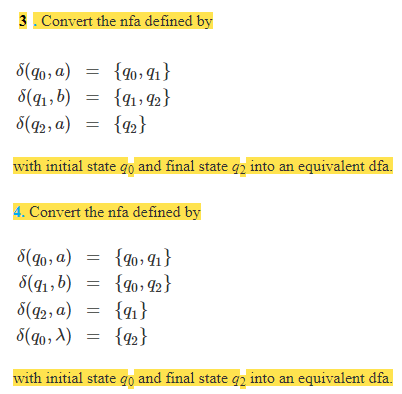Answered step by step
Verified Expert Solution
Question
1 Approved Answer
3. Convert the nfa defined by (q 0 , a) = {q 0 , q 1 } (q 1 , b) = {q 1 ,
3. Convert the nfa defined by
(q0, a) = {q0, q1}
(q1, b) = {q1, q2}
(q2, a) = {q2}
with the initial state q0 and the final state q2 into an equivalent dfa.
4. Convert the nfa defined by
(q0, a) = {q0, q1}
(q1, b) = {q0, q2}
(q2, a) = {q1}
(q0, ) = {q2}
with the initial state q0 and the final state q2 into an equivalent dfa.

doing just one will be fine... i would really appreciate it if you help me with both though... thanks!
3 . Convert the nfa defined by with initial state go and final state q2 into an equivalent dfa. 4. Convert the nfa defined by 2,a with initial state go and final state q2 into an equivalent dfaStep by Step Solution
There are 3 Steps involved in it
Step: 1

Get Instant Access to Expert-Tailored Solutions
See step-by-step solutions with expert insights and AI powered tools for academic success
Step: 2

Step: 3

Ace Your Homework with AI
Get the answers you need in no time with our AI-driven, step-by-step assistance
Get Started


